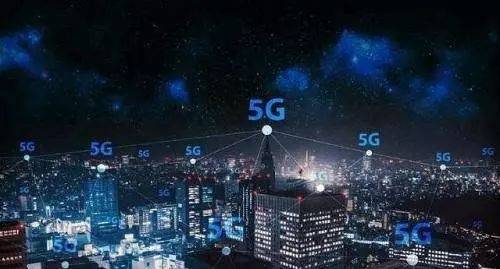Recently, with China Unicom taking the lead in launching new applications based on Gigabit wireless networks in Hainan, the value of the network in the 4G era was once again excavated, and the application of some quasi-5G technologies to the existing network to enhance the network experience has also become a general trend.

Just as Huang Yuhong, vice president of the China Mobile Research Institute, mentioned in the recent LTE seminar, TDD technology has been greatly developed. Operators are actively adopting 4G+ technology to build a deeply integrated network of TDD and FDD. Datang experts also expressed at the seminar that operators can walk on two legs during the evolution to 5G: first upgrade the existing 4G network, and continuously increase the capacity of the network system by continuously introducing new features. And peak rate, to meet the needs of higher network requirements; Second, the industrial chain should innovate new technologies, layout new formats, accelerate the research and development of 5G pre-commercial equipment and end-to-end verification work, and ultimately build 4G/5G collaboration, multi-level heterogeneous Full coverage of 5G networks.

Datang Mobile 5G Senior Expert Zou Suling
For how to further tap the value of 4G network and use quasi-5G technology to enhance the existing network experience, Datang Mobile 5G Senior Expert Zou Suling gave us a detailed explanation.
Quasi 5G makes 4G experience "more beautiful"
As an important partner of operators, Datang Mobile has adopted a series of solutions including large-scale antennas and 3D MIMO technologies for deep optimization of 4G networks, and is used to cooperate with operators in network depth optimization. It is reported that in the LTE network, Datang Mobile has developed a 3D MIMO device with a 2.6GHz band. The device supports 64 RX/TX channels, 128 array antennas, 16 streams for downlink, and 8 streams for UL.
Zou Suling explained that large-scale antennas and multi-stream MIMO technologies are quasi-5G technologies, which can greatly improve the throughput of the cell. Under normal network conditions, the cell throughput can be increased by about 3 times, and in peak cases, it can reach 6 times. The capacity problem is a very good solution. Without increasing the spectrum or increasing the number of base stations, the cell throughput can be effectively improved.
In addition, MEC (Mobile Network Edge Computing) technology is also a hot spot for quasi-5G technology to be applied on the current network. MEC technology deploys service servers at the edge of wireless communication networks to integrate services with the network. This can effectively reduce the delay of wireless services, reduce the transmission bandwidth requirements, and improve service experience. Currently, MEC technology has been pilot tested in LTE networks and will be expanded in 5G. Zou Suling said that due to the greater demand for 5G service rates and lower transmission delay requirements, MEC technology has become an important configuration for 5G networks. In particular, for low delay and high reliability in the uRLLC scenario, only deploying services at the edge of the wireless network through MEC technology can effectively relieve the delay in service application and improve the user experience.
Make full use of all frequency band resources to form a converged network
There is no doubt that although 2020 is 5G commercial time, LTE will exist for a long time. Therefore, what value of 4G technology in terms of spectrum and network optimization can be excavated, and it has also become a focus of attention in the industry chain.
In terms of spectrum, Zou Suling said that after so many years of development of wireless communication technology, low-band resources have been basically used, and high-band resources are relatively abundant, and it is easy to provide large bandwidth, and TDD technology has reciprocity of uplink and downlink channels, sending and receiving double The flexible characteristics of the work transition make it easier to implement multi-antenna and multi-stream technologies, and it has advantages in high-frequency and near-field coverage. Due to the scarcity of spectrum, the technical value of TDD will become more prominent in the future.
In contrast, FDD technology needs to allocate paired spectrum, and UL/DL needs a certain protection bandwidth. Although FDD plays a greater role in the lower frequency bands, it provides better coverage of mobile communication networks and guarantees the continuity of basic voice and data services. However, the service capacity provided by low-band resources is limited. With the further development of mobile Internet service scale and new service applications, such as AR/VR services, the current wireless networks cannot meet their needs, and they need to provide higher speeds. The bandwidth, lower latency, guarantees a better service experience, and can only be developed towards higher frequency bands.
"Taking account of the different characteristics of the high and low frequency spectrums, the high frequency band is more suitable for outdoor close coverage and indoor coverage, and at the same time it is combined with the low frequency macro coverage network to increase the deployment of high frequency networks in hotspots where low frequency bands cannot meet. Complementary with the speed advantage, the use of network optimization technology to form a converged network.†Zou Suling further added.
Several industry experts, including Zou Suling, also suggested that operators should target different frequency bands, that is, low-frequency network positioning as a base coverage, medium-frequency coverage to provide medium-rate service coverage, and high-frequency networks to provide video and other high-rate coverage requirements. The connection/multi-connection technology realizes the cooperation in multiple frequency band networks and satisfies the high speed and seamless mobility requirements of mobile communication services.
Exploring 5G/IoT application car networking can not be more fire
In the field of collaborative development between 4G/5G and IoT, car networking is undoubtedly the most popular hot spot. Datang had previously conducted research and development for 5G connected vehicles early, and proposed LTE-V technology solutions for V2X applications, and promoted the standardization of domestic and international LTE-V technologies. It is reported that Datang has completed the prototype system development and technical verification, and has deployed equipment and demonstration applications in Shanghai and Chongqing to demonstrate front-vehicle collision warning, road slippery warning, pedestrian warning, and cross-boundary collision warning. More than a dozen car networking scenes, including speed guidance.
LTE-V technology is currently attracting much attention. For the characteristics of the technology, Zou Suling explained that LTE-V adopts technologies such as optimized pilot design, distributed resource scheduling based on SPS, high-speed mobile frequency offset calibration, and fast AGC. Features such as delay and high reliability, support for basic 100ms service delay, transmission delay of 20ms or less can be configured according to service requirements, packet reachability above 99%, and transmission distance up to 1 in non-blocking direct-view environment Above the km, it can effectively guarantee the time delay and reliability requirements of the major security business of the vehicle networking. "These are close to the demand of 5G uRLLC. LTE-V can be regarded as the 5G first-phase application and it will evolve to 5G in the future."
It is reported that in the international arena, Datang is a joint reporter of the 3GPP standard, and R14 has been formally completed in March this year; at home, Datang is the main undertaking unit for CCSA's LTE-V line marking and has been completed including LTE's overall technical requirements for wireless networking technologies for vehicle networking, including multiple LTE-V2X line items and writing work.
In the future, including car networking, based on the deep optimization of 4G networks and the emerging 5G environment, more smart applications will benefit from the promotion of the industrial chain, which is expected to benefit all walks of life to form a smart industrial ecosystem.
The Smart Screen Protector Cutting Machine can help stores reduce the inventory of Screen Protectors. It is mainly used to cut Screen Protectors such as Mobile Phone Screen Protectors, Watch Screen Protectors, Tablet Screen Protectors, Pad Screen Protectors, and personalized fashion Back Films. It is very suitable for personal business or shop drainage.
Universal Screen Protector Cutting Machine has 20000+ cloud data of different specifications and models, adopts massive cloud database, and all data is updated synchronously in the state of networking. You'll have a full range of screen protector models on one machine and cut any Screen Protector model as needed without having to stock up on Screen Protectors for various phone models. No more losing customers due to missing models.
Screen Protector Cutting Machine,Protective Film Cutting Machine,Back Sticker Cutting Machine,Phone Sticker Cutting Machine, Film Cutting Machine
Shenzhen Jianjiantong Technology Co., Ltd. , https://www.jjthydrogelprotector.com